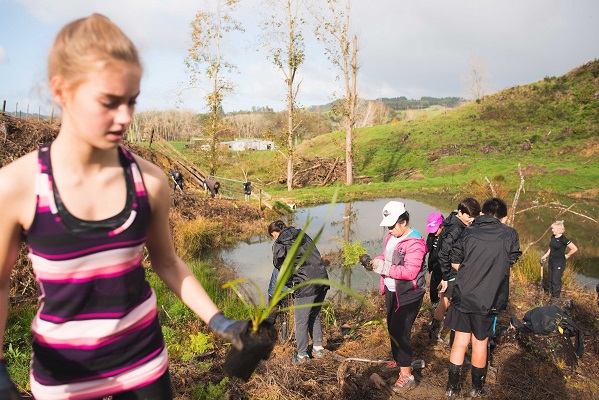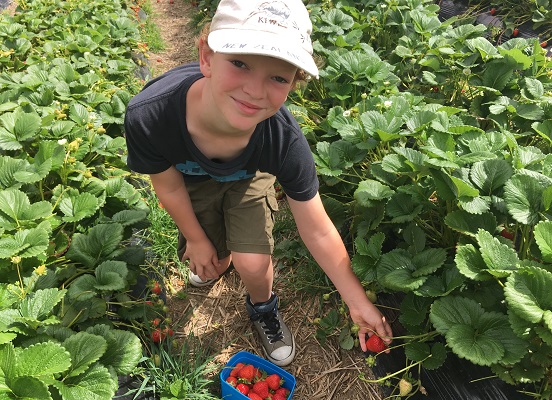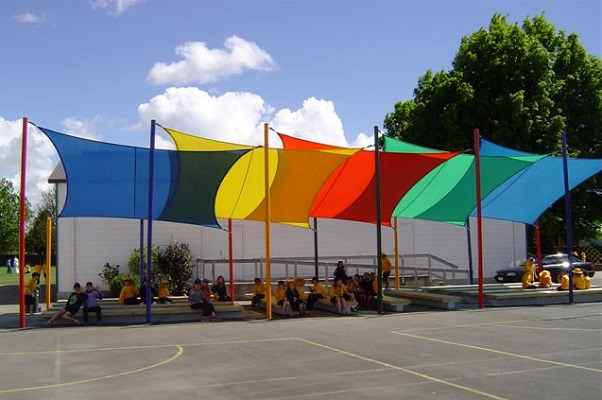Ways to generate kaitiakitanga in your school

Sustainable schools incorporate environmental challenges like climate change into core subjects such as math, science and art, and are modifying the teaching-learning process to a more all-encompassing approach. In this way, students can more easily relate what they learn in the classroom to their real life actions, and become well equipped to adopt sustainable lifestyles.
There are many ways in which schools can develop sustainable practices, too many to include here, but here we take a look at some of the best.
Planting
Trees for Survival is an environmental education programme which involves young people growing and planting native trees to restore natural habitats. They help landowners to revegetate erosion-prone land, improve stream flow and water quality, and increase biodiversity.
“We deliver seedlings to the schools about three times a year during planting seasons,” says spokesperson Michelle Swanepoel. “The students pick out the seedlings and nurture them until they’re ready for planting, usually about a year’s worth of loving and learning, then we organise a planting day on an at risk site – a stream, a hillside or valley. It’s a really fun day out, the kids get stuck in and get muddy. Sometime Wai Care will come along to test the water so the kids can get a feel of where that site is at in terms of water quality. We try to book the same site year on year, and to repeat that water test to hopefully show an improvement so the kids get to see the growth from the previous year.”
Trees for Survival partners with councils and voluntary organisations which help with cost and delivery. Schools pay a nominal fee to join.
Keeping waterways clean
The team at Sustainable Coastlines deliver educational programmes to schools and community groups to bring to light the effects of rubbish on the marine environment. “We are largely about positive behavioural change and generating kaitiaki,” says co-founder and spokesman Sam Judd. “It’s about using less plastic, growing more food and not littering. Children learn that their actions inland are having an impact on the oceans and that generates more motivation.”
Edible gardens
Edible gardens are taking off in New Zealand primary and secondary schools, presenting important new opportunities to promote fruit and vegetable consumption, new University of Otago research has found.
Among 491 schools surveyed, more than half (52.9 per cent) had an edible garden, with most having been started in the previous two years.
From learning about microorganisms to cooking soup, building bean frames to writing poetry, gardens were used across the curriculum as a ‘hands-on’ way of enhancing student learning.
As well as being used to teach specific curriculum areas, edible gardens were seen to resonate with schools’ values, such as sustainability, partnership between school and home, work ethic, community service, practical skills, pride and respect.
Energy-efficient buildings
The most cost-effective time to improve energy performance is at the design stage of a new building, and the MoE urges boards of trustees to consider this in any building project and upgrades.
Look at the entire life cycle of products and building systems. You can then make decisions on which heating and cooling systems to use in terms of their whole-of-life cost. Whole-of-life considers the costs and benefits of getting the best performance, reliability and safety over the life of an asset.
The best value for money might be in a high-performance building ‘envelope’. In this way, energy efficiency is incorporated in every aspect of the building design. The aim is to reduce the need for heating and cooling as much as possible.

Shade sails, canopies and screens
The benefit of installing shade sails and canopies around the school are two-fold – they help to keep students safe from the sun, and they help to keep the buildings healthier too.
“In summer, a canopy attached to the external wall will help to keep the classroom cooler,” says spokesperson Megan Cummins from Fresco Shades. “And it encourages awareness of staying under cover during the heat of the day. Children learn that if they’re under the canopy, they are safe from the sun.”
The key is in choosing a quality product from the outset, says Mike König from 0800 Sunshade, and this involves consideration of the design, the fabrication, and the fabric. “You need to be sure that whatever is installed gives you the shade where you want it and when you want it because very rarely does the sun actually sit right above us. So the design is important.”
Then there’s the fabrication. “Although it looks simple, a lot of engineering goes into it to make sure it stands up to the wind. We have seen shade sails that don’t fit properly between poles so the fabric gets pulled diagonally instead of straight so it breaks.”
Heavy fabric is not always best. “Go with a fabric that has stood the test of time. We’ve got samples of fabric that still has 92 per cent of its original strength after 15 years.”
Mr König says schools need to protect their investment in sunshades by maintaining them. “If it doesn’t have to be up in winter, take it down and have it inspected. And at the first sign of the fabric or stitching going, get it repaired before it becomes major damage.”
Waste management
Responsibility for waste management in schools falls to boards of trustees. Guidelines from the Ministry of Education state that schools should use a combination of methods to reduce waste by separating, reusing, recycling and composting.
Set up bins for the different kinds of waste, and label them for glass, paper, plastic, cans and organic waste. Avoid sending waste to a landfill by educating staff and students about other ways of disposing of waste, such as recycling, reusing and composting.
Ways that schools can reuse waste include:
- taking lost property to local clothing banks
- using plastic bags as bin liners or as packaging
- having students make recycled paper and use shredded paper as bedding for pets.
Separate organic waste, like food scraps, plants, paper and lawn clippings, from other rubbish, and teach students how to use it for compost. It could be used on the school’s garden, saving on the cost of fertiliser. If composting is not possible:
- ask students and teachers to take organic waste home
- find out if local farmers want organic waste
- keep hens at school and feed them the waste
- have the organic waste composted at the local landfill – it’s generally cheaper to drop organic waste at a landfill than other rubbish.
Solar power
Keeping the electricity running in a school is not cheap, and more schools are making the move to solar power. With the price for grid connect solar power systems continuing to fall, it is now an increasingly affordable option for schools. Many schools with energy-efficient solutions use them as learning tools for students, particularly during maths and science. At Henley Primary School in Nelson, the first school in New Zealand to sell power back to the grid, principal John Armstrong says his students are “well aware and conversant” of the school’s efforts to be more sustainable.









